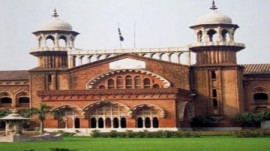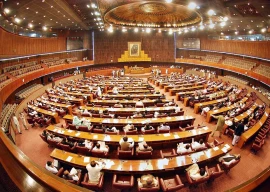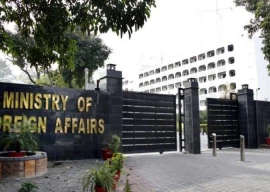
The avalanche triggered by a glacier melt had cut off the road to the remote Badswat and adjoining four villages in Ghizer valley of Gilgit-Baltistan (G-B), leaving hundreds of villagers stranded.
“The situation is precarious as the glacier melt has not stopped yet,” said social worker Tahir Rana who visited the devastated villages on Sunday. “The road leading to Badswat and four surrounding villages is blocked which means the residents are running fast out of food and medicine,” Rana told The Express Tribune soon after reaching Gilgit.
Avalanche kills Austrian mountaineer in Pakistan
He added that the Pakistan Army and district administration have supplied some food and other items of basic needs to the villages “but that’s too short to meet the requirements of the local population.” The social worker said that a humanitarian crisis can break out if the villagers are not reached out with medicine and food on an emergency basis.
The National Disaster Management Authority (NDMA) has reportedly set up a camp Bilhanz as part of their efforts to reach out to the affected people. The camp is about three kilometres short of upstream villages including Badswat. “From Bilhanz, you have to trek up to the villages through a dangerous track that too early in the morning when the water level is low,” said Rana.
The people living in low lying areas fear that they could be hit by the flood if the lake bursts out. According to Rana, the residents might face an outbreak of epidemic and environmental issues as a mysterious smoke has engulfed the villages besides the shortage of food.
3 bodies retrieved from avalanche hit site in IoK
Deputy Commissioner Shuja Alam told The Express Tribune that the situation was under control as government had initiated relief work in the area. “There is nothing to worry about as water in the lake has receded drastically,” he added.
Alam said that a total 19 houses got damaged by the avalanche. He added that the administration has shifted 30 families to safer places. “There are two types of floods that happened in the valley,” said the DC, adding “one is the seasonal floods and other is caused due to glacier melt, which is rare.”
The disaster has refreshed memories of a similar incident that killed 19 people and led to formation of Attabad Lake in Hunza valley eight years ago.























COMMENTS
Comments are moderated and generally will be posted if they are on-topic and not abusive.
For more information, please see our Comments FAQ